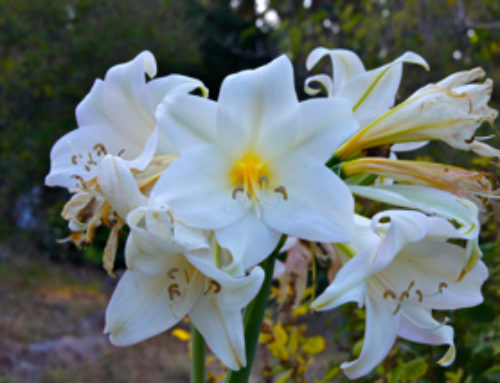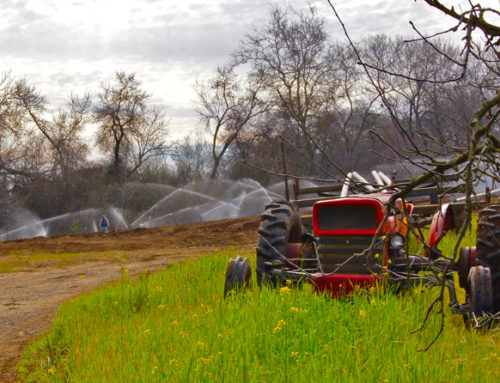Between apple blossom and apple fruit, a tree is never left unattended and there is lots going on behind the scenes. After the enchanting springtime apple bloom it is now time to thin.

Thinning apples
Thinning an organic apple orchard is mostly done by hand, and takes a lot of time. Under ideal pollinating conditions each cluster will set five little fruits, of which all but one or two are pinched off to grow into marketable sized apples.

Thinning an apple cluster
Also, the thinning process gives us the opportunity to select for the strongest and healthiest of the developing apples in the cluster. For example, we can already thin out apples that have a little fungal scab, rosy apple aphid, or snail damage.

Thinned apples
Once the orchard is thinned it will be time to irrigate, which this year will need to happen soon since the trees haven’t gotten any decent rainfall since January. A month or two before harvest, in June or July, we will also do some selective summer pruning to allow sunlight to penetrate the trees to help color and improve the flavor of the apples.

Cherry tomato field
The short heatwave last weekend has the tomato plants developing quickly, many are starting to flower, which means we can’t fall behind on the important task of staking and trellising.

Flowering tomato

First trellesing strings
In the past, staking was a dreaded job as we used to pound every single stake by hand using a contraption built from a 2 inch metal pipe that has two large handles welded to it, jokingly this tool is referred to as “El Nino” or “The child”. Nothing cute or affectionate about it, but it requires the same movement as if one were to lift up a young child. The “Nino” once lifted up into the air is dropped on top of the stake several times until it is about a foot deep in the ground. It’s a tiring and time-consuming upper body workout we’d rather avoid. Ever since we purchased a tractor mounted hydraulic stake pounder two people can stake 5-6 acres in a few days, something that would take typically weeks. Now we don’t fall behind in the more important job of tying and trellising what are two of our most important crops – tomatoes and raspberries.

Staked dry-farmed tomato field
This year we were able to plant our potatoes early and the crop looks gorgeous, covering the entire field like a green lush blanket.

This season’s potato field
Soon the green will be offset by pretty white and purple flowers which means the plants are at a stage where they will have peaked in their growth of shoots and leaves and will start reverting that energy by directing it below ground to develop potato tubers. Digging around the base of the plants the other day, I could already find some small, egg-sized “treasures”. I estimate that in 3-4 weeks we’ll be digging our first red potatoes, followed by white and yellow and finally fingerling potatoes.

First of the Yellow Finn potatoes





